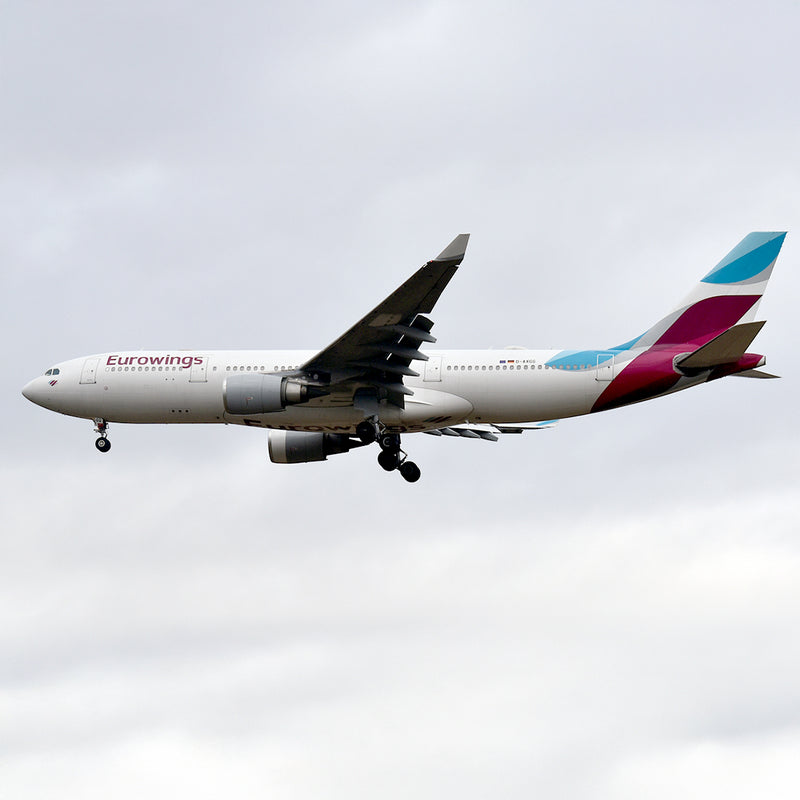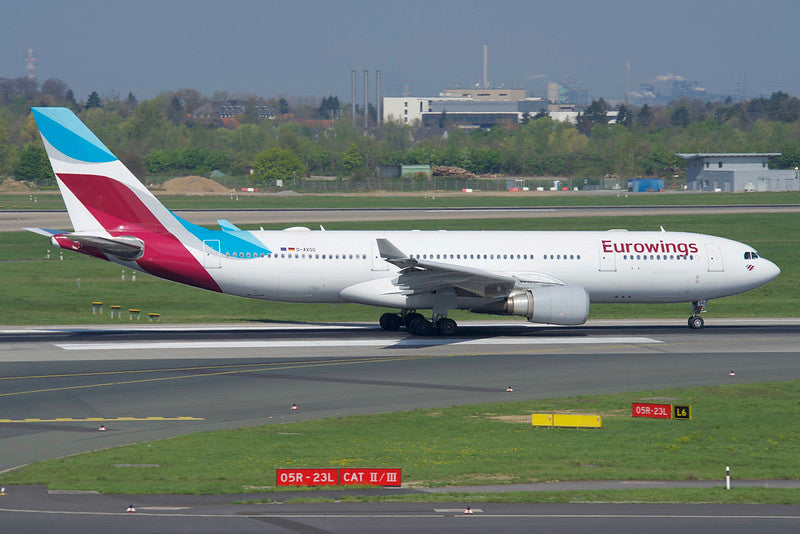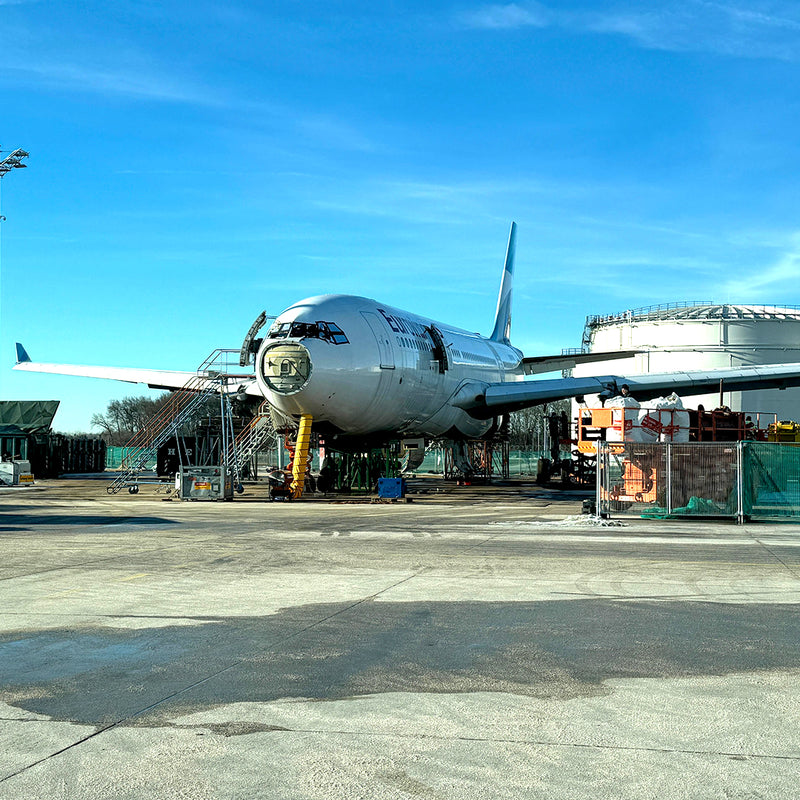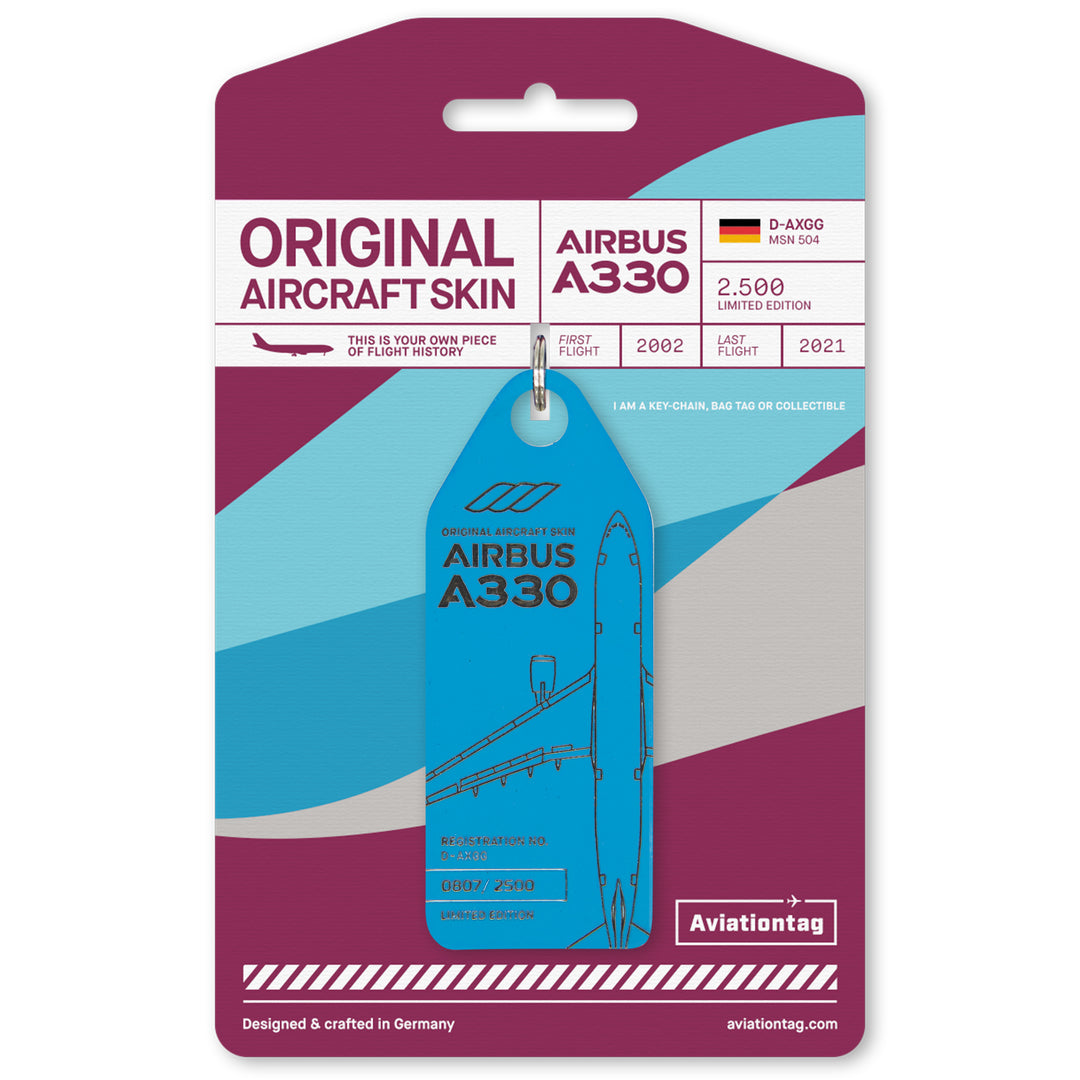From Toulouse to the Tag: The Story of D-AXGG
In the annals of commercial aviation, few aircraft achieve legendary status. Most serve reliably for years, racking up tens of thousands of flight hours before quietly disappearing from view. But some—through their journeys, operators, or sheer resilience—earn a second life. Airbus A330-200 MSN 504, better known in its final chapter as D-AXGG, is one such aircraft.

The story of D-AXGG begins in Toulouse, where it first took to the skies on November 6, 2002, as F-WWKL in test configuration. Built as an A330-203, the aircraft represented Airbus’ answer to the growing demand for long-haul, twin-engine efficiency in the early 2000s. It was delivered shortly thereafter to Volare Airlines of Italy in November 2002, where it was registered as I-VLEH.
Its time with Volare was brief, and by January 2004, it had returned to its lessor GECAS and been re-registered as EI-DDV. The aircraft’s next chapter would take it eastward.
Aviationtag Airbus A330 D-AXGG Edition Alle
Qatar Airways: Prestige and Precision
In February 2004, the aircraft joined the rapidly expanding fleet of Qatar Airways, re-registered as A7-AFO. At a time when Qatar was investing heavily in regional connectivity and expanding its international network, the A330-200 fit perfectly into its plans. Deployed on a mix of regional and medium-haul routes, A7-AFO served in the Oryx fleet for over five years, embodying the airline's growing global ambitions.
In mid-2009, the aircraft transitioned to Turkish Airlines as TC-JNG, taking on a new name: Eskisehir. This phase marked the longest and perhaps most consistent period in the aircraft’s operational life. With Turkish Airlines continuing its ascent as a major global carrier, TC-JNG was deployed on long-haul routes to Asia, Africa, and the Americas.
For over seven years, it crisscrossed the globe as part of one of Europe’s fastest-growing airlines. However, in October 2016, it was placed in storage—an increasingly common fate as airlines transitioned to newer, more fuel-efficient aircraft.


In November 2017, the aircraft found new life under the German registration D-AXGG, operated by SunExpress Deutschland on behalf of Eurowings, a Lufthansa Group subsidiary. Still owned by GECAS, it joined a fleet of widebodies aimed at servicing long-haul leisure routes from German hubs to destinations across the Caribbean and Southeast Asia.
Under Eurowings livery, D-AXGG embodied the hybrid model of modern aviation—wet-leased, cooperatively managed, and flying vacationers to
sun-drenched runways. Its operational career, however, was cut short by a seismic event in global aviation: the COVID-19 pandemic.
In March 2020, as travel came to a halt, D-AXGG was stored—just over two years after it re-entered service. It would never return to the skies.
Scrapped in December 2023, D-AXGG might have quietly vanished like so many aircraft before it. But at Aviationtag, we believe in giving aviation icons a second life. Instead of being lost to history, D-AXGG has been transformed—carefully and sustainably—into a limited-edition run of Aviationtags.
Each tag is a piece of the aircraft's original fuselage, a fragment of history that retains the scars and stories of its nearly two decades aloft. From the sands of Doha to the shores of Cancun, from Turkish business travelers to German holidaymakers, D-AXGG transported countless lives, stories, and emotions across continents.
Now, those stories are preserved not in hangars or archives, but in pockets, on keychains,and in display cases around the world.

An Invitation to Remember
Not every aircraft gets remembered. But D-AXGG—by virtue of its international service life, its varied identities, and its post-retirement transformation—offers something rare: a tangible memory of flight, preserved in metal.
Whether you saw it parked at Istanbul Airport, boarded it in Cologne, or never crossed paths at all, holding one of its tags connects you to something larger—a global network of aviation, memory, and movement.
This is not just about nostalgia. It’s about honoring the everyday machines that carried us, quietly and reliably, through the air. Machines like D-AXGG, that did their job and did it well.
Now retired, it continues its journey—not through the clouds, but through stories, collections, and the hands of those who still dream of flight.









